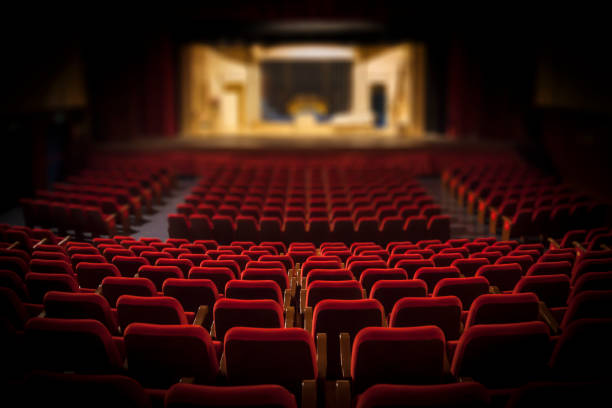Reinventing the Wheel: A Novel Examination of the Circular Stage
The world of theater is always ripe with innovation, pushing boundaries, and testing limits. One such groundbreaking development that hasn't been widely discussed is the advent and impact of the circular stage. This article delves into its history, current trends, and significance in theatrical productions.

A New Stage is Set: The Historical Context of the Circular Stage
The circular stage, also known as theater-in-the-round, has its roots in Ancient Greek theater. The Greeks were among the first to utilize a circular playing area, known as the orchestra, where the chorus would perform. However, the modern concept of the circular stage emerged in the 20th century, a departure from the traditional proscenium arch stage. The stage was surrounded by the audience on all sides, providing a unique viewing experience.
The 360-Degree Revolution: Adoption and Adaptation in Contemporary Theater
The 20th century saw a resurgence of the circular stage, with theater companies around the world adopting it as a fresh approach to stagecraft. One notable example is the Roundabout Theatre Company in New York City, which specializes in theater-in-the-round productions. The design allows the audience to feel more immersed in the action, fostering an intimate connection between actors and viewers.
The Impact of the Circle: Analyzing the Significance and Reception
The circular stage has significantly influenced the way plays are directed and performed. It challenges traditional staging, blocking, and lighting techniques, prompting directors and actors to think creatively. This style of theater has been well-received by audiences, often lauded for its immersive and intimate nature.
The Future is Round: Current Trends and Developments
Today, the circular stage continues to evolve with technological advancements and innovative design concepts. New trends include revolving stages, multi-level circular stages, and stages incorporating digital technology for added visual effects. These developments signify a promising future for the circular stage, paving the way for continued evolution, growth, and creativity within the theatrical sphere.
The Circle Comes Full Circle: Reflecting on Its Lasting Impact
Thus, the circular stage, while not a new concept, represents an important aspect of theater history and modernity. Its innovative design, intimate nature, and unique viewing experience have revolutionized the theater industry. As it continues to evolve and adapt to new trends and technologies, the circular stage reaffirms its importance in the world of theater, marking its place as a significant and influential theatrical form.
In conclusion, the circular stage is a testament to the ever-evolving world of theater. Its unique design and immersive nature offer a fresh perspective on traditional stagecraft, redefining the relationship between actors and audience. As we look forward to the future of theater, the circular stage stands as a beacon of innovation and creativity, promising further exploration and evolution in the art of performance.




